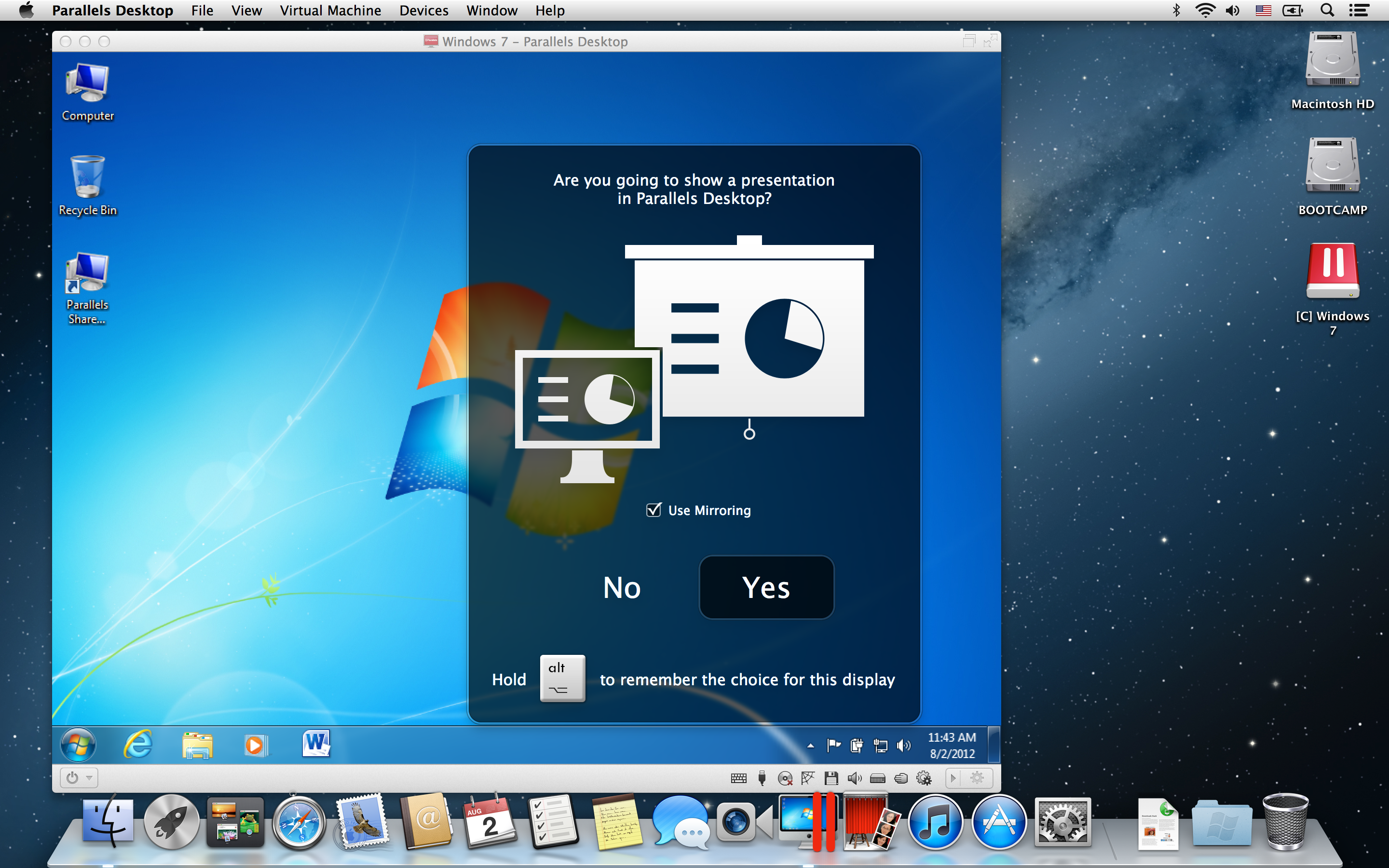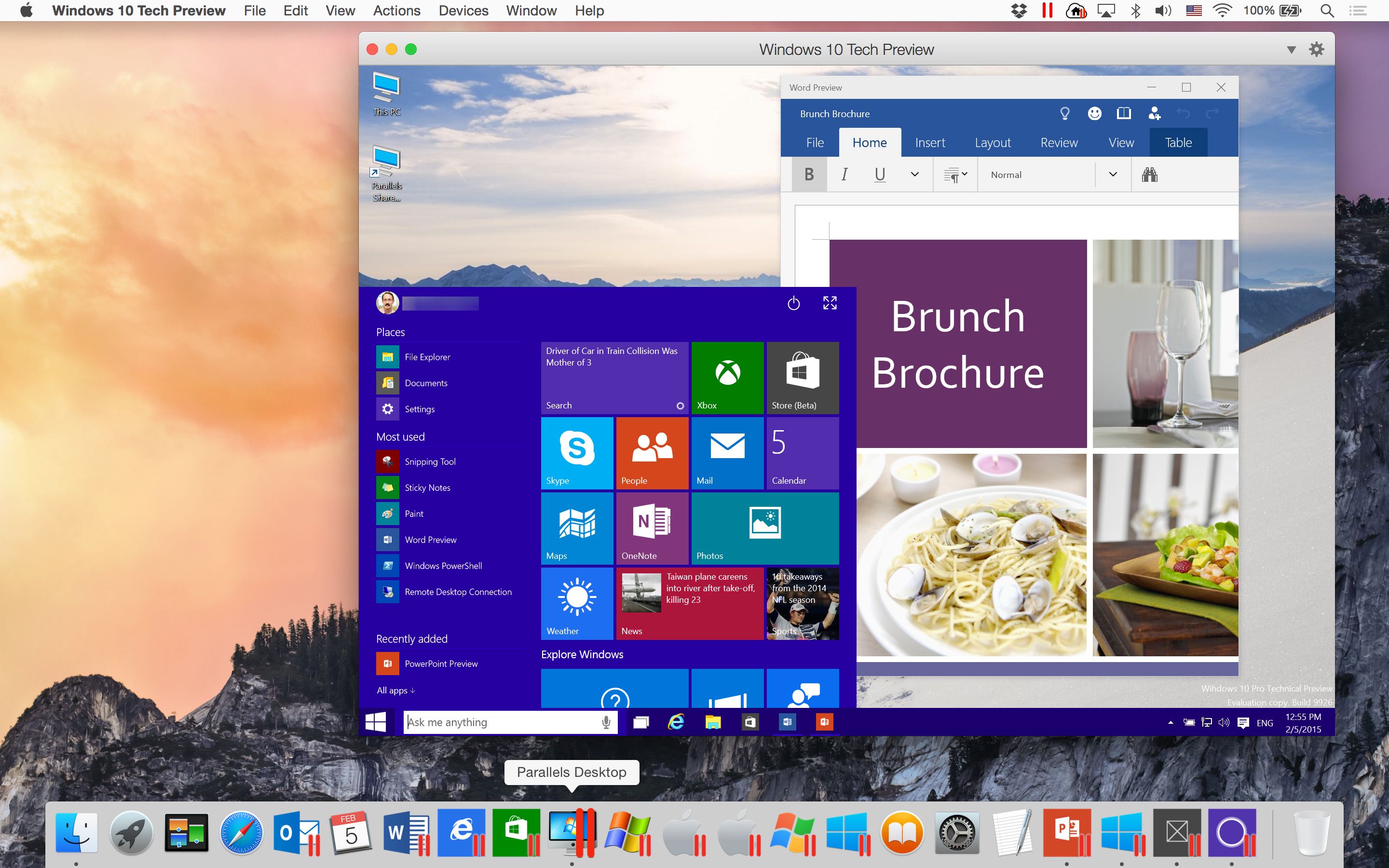Parallels, on the other hand, charges you $79.99 ($49.99 for upgrade) for its Mac virtualization product. In both cases, that also excludes the price of a Windows 7 license, which you'll need!
Since buying my first Intel Mac in 2006, I have used Parallels Desktop for virtualization. I used it mainly for running Windows for when I needed to either test something or run an important application in Windows. Since last year, I have been running Mac VMs in Parallels to build packages, to test package installs through Self Service, and test policies and configuration profiles before making them live. This works well for the most part, but because of some unresolved problems with running Mac VMs in Parallels, I an contemplating a change to VMware before my Parallels Pro subscription comes up for renewal in September. To all the Mac admins to run Mac VMs, which do you think is better to use? Parallels, or VMware? I have seen a lot of demos at JNUC, and other places where the presenter was using VMware, and that has me curious about making a change.
- 9.0Outstanding
Pros
- ✓Runs Windows and Linux VMs on Macs
- ✓Tight integration of Windows and Mac features
- ✓Improved performance and battery life
- ✓Supports Windows 10 and OS X El Capitan
Cons
Parallels 10 For Mac
- ✕Requires plenty of memory and processor power
- ✕Poor documentation for newcomers
Updates to the popular Parallels Desktop virtualisation program generally coincide with new versions of the Mac operating system, so it's no surprise to see that Parallels Desktop 11 arrives just a few weeks ahead of Apple's new OS X v10.11 -- a.k.a. El Capitan. But, of course, this year's update also follows the recent arrival of Windows 10, which means that Parallels Desktop 11 is a fairly major update that provides support for both of these new operating systems.


Hey Cortana, where's Siri?
The most impressive aspect of Parallels Desktop 11 is not simply that it allows you to run Windows as a virtual machine (VM) on the Mac (along with various versions of Unix, and even Android and ChromeOS too), but that it continues to integrate the Mac and Windows environments so that features from each operating system become almost interchangeable.
Parallels 13 For Mac
One of the headline features in Windows 10 is Cortana, the 'personal assistant' that lets you use voice commands to find information on the web, send messages and perform a variety of other tasks. Cortana is often compared to Apple's Siri, but Siri is currently only available on Apple's iOS devices and doesn't run on the Mac. Parallels Desktop 11 therefore pulls off quite a trick by allowing Cortana to not only run within a Windows 10 virtual machine, but also to run with the VM hidden or running in the background while you work in native Mac apps. So, while I'm typing this review in Apple's Pages wordprocessor, I can say 'Hey Cortana - schedule a meeting'. The Cortana window then pops up from the Dock on the Mac desktop and lists options for my meeting.
OS integration
Other examples of this OS integration include the Mac's QuickLook option, which now works within Windows too, allowing you to preview documents stored on a Windows virtual machine just by hitting the space bar on your keyboard.